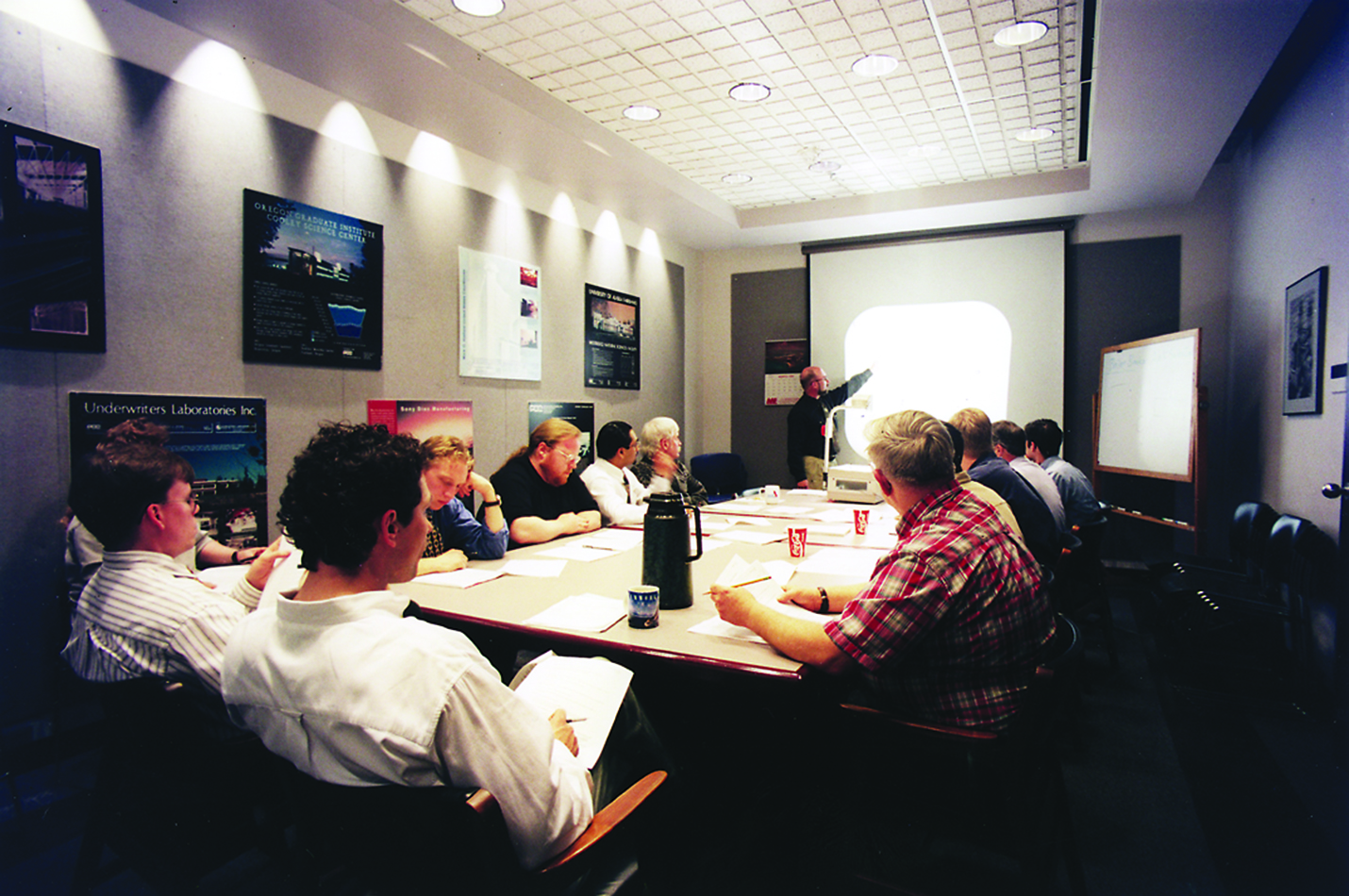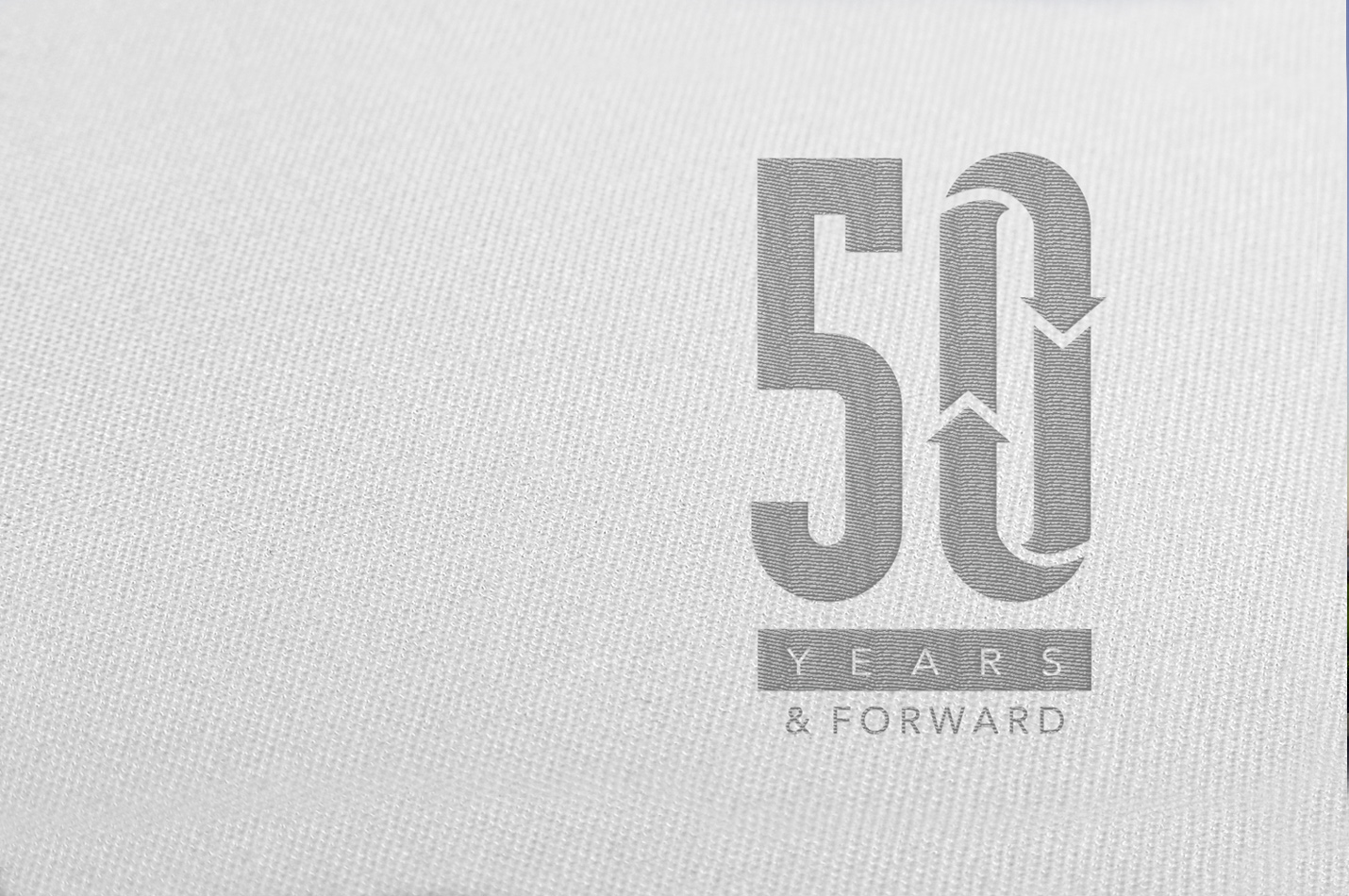Engineers gather at the Portland office in 1999.
Our evolution
The making of a leader in sustainable engineering design
Today, PAE is a globally recognized leader in sustainable engineering design. But, we had to start somewhere. That journey began more than six decades ago in Portland, Oregon.
1967-1970s
In 1967, Harold “Pete” Peterson, Sid Nielsen, and two other engineers left the Portland office of industry giant Skidmore Owings and Merrill (SOM) to establish Peterson Associated Engineers. An innovator from the beginning, PAE was the first engineering firm in Portland with integrated mechanical and electrical design.
SOM, which soon closed its in-house engineering group, enlisted PAE for an array of commercial and industrial projects. Working with other architects, the firm also branched into elementary and middle schools, hotels, and the promising technology industry. The forward-looking Peterson helped meet the demand by purchasing—for $10,000—a revolutionary Wang word processor and renting time for engineering calculations on offsite computers.
1980s
PAE engineers stamped a host of projects that would come to define Portland, from the passenger platforms of the city’s brand-new light rail system, to the 35-story KOIN Center, to the V.A. hospital on “pill hill.”
The early part of the decade, however, brought the region-wide sting of a rapid fall in the local tech industry. “Our Tektronix work stopped in a single phone call and everybody’s was stopped within a week,” reported one senior engineer. The lesson was well taken by new president, Carl Urben.
By 1986, when the firm officially became PAE Consulting Engineers, its mix of projects still included clean rooms and technology research facilities, but was far more diversified. It included commercial high-rises, government buildings, healthcare facilities, and a few college and university projects.
1990s
The 1990s at PAE featured a series of intriguing projects, among them extensive work with numerous technology clients and Portland’s new high-rise courthouse building, one of the federal government’s first “Design for Excellence” projects.
PAE also expanded its geographic reach. The firm went north to Alaska, south into California, and—with lighting design for retail showrooms—east into Boston and Atlanta.
The firm’s work moved outdoors too, most notably at Portland’s Jamison Square and South Waterfront Park. These and most other projects called for energy-efficient design, making variable frequency drives, energy management systems, low-flow plumbing fixtures, compact fluorescent lamps, and a host of other technologies part of the firm’s everyday work.
Early in the decade, buildings with such technologies may have been dubbed as “intelligent” or “green,” but by the end of the 1990s they were “high performance,” “sustainable,” and—with great anticipation—“LEED."
2000s
From the beginning of 2000 until 2007, PAE designed systems for, planned, or commissioned nearly 30 LEED-rated or registered buildings. This was an accomplishment equaled by few engineering firms nationwide.
On the firm’s drawing boards was a Net-Zero Energy commercial building, the pilot project for the LEED for Neighborhoods rating system, and what promised to be one of the nation’s first Living Buildings.
In the commercial sector, PAE had major office-building projects underway on both sides of the Columbia River and, for the Port of Portland, was engaged in a sizable parking structure/headquarters building as well as a new post-9/11 baggage-screening system.
College and university buildings had become a PAE staple, particularly LEED-targeted libraries, student housing, and science centers that demanded innovative engineering. Those projects often called for complex lighting approaches, too.
Starting in 2001, PAE enlisted lighting-design expertise from its newly separate division, LUMA Lighting Design.
Our firm welcomed a new president in 2004, Paul Schwer. He led the firm to become an industry leader in engineering design for high-performance buildings, revenue growth, and sustainability. Because of his passion and leadership, PAE became carbon neutral in 2008 and carbon negative 11 years after that.
In 2013, our Seattle office opened with the unveiling of the much anticipated Bullitt Center, our engineering vision many years in the making. With it's signature PV overhang, it has now become a recognized architectural icon in the city . The Bullitt Center is the world’s second largest commercial Living Building in an urban setting, achieving net positive energy, net zero water, and net zero wastewater each year.
Two years later, our Eugene, Oregon office opened serving clients in the Willamette Valley with key projects in K-12 education, higher-education, and civic arenas. The office brought a passion for regenerative design and over a decade of experience in Design-Build projects.
In 2016, we opened a San Francisco office answering the demand from our exisiting clients in the city and surrounding areas. Our strong relationships have helped us secure high-performance projects in everything from technology and commercial office to higher education, healthcare, and housing.
We celebrated our 50th anniversary in 2017. Our staff of 225 was able to bond with fun events and good food under the theme "50 Years Forward" where we tried to predict what may come by 2067.
2020s
PAE opened a Spokane office to better serve our Eastern Washington clients and, a few years after that, we saw the same high demand from our clients in Southern California. Our Los Angeles, California office now serves a wide range of sectors from commercial buildings to senior housing.
In our pursuit of the world's most sustainable buildings, we have an incredibly robust and ever-increasing portfolio of Living Buildings, Net Zero Energy, All-Electric, and LEED Platinum buildings.
As a response to the need for more space for our staff in Portland and to walk the talk, we built the PAE Living Building, the world's largest urban commercial Living Building that is also the world's first developer-led Living Building.
As we look to 2030 and beyond, we have only just scratched the surface of what can be achieved through a sustainable approach to engineering in the built environment.




